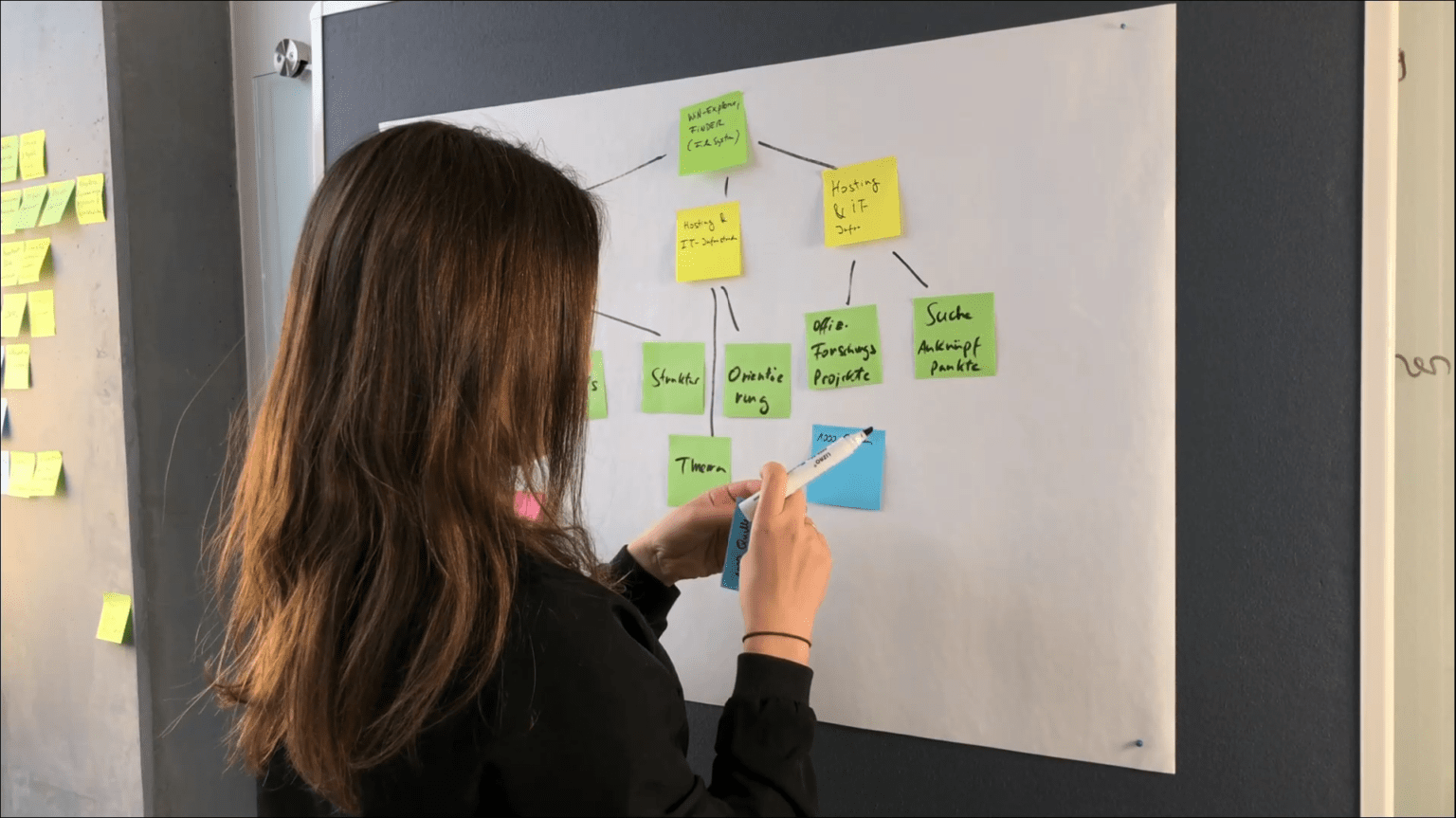The Alternative to Mind Map and Whiteboard

Mind mapping is probably the best-known brainstorming tool, but it quickly reaches its limits in terms of overview and flexibility. Concept maps, pinboards and note boxes have compensated some of the mind map’s disadvantages, but they still do not offer the desired overview while maintaining the details of more complex topics. Infintiy Maps, an efficient and creative alternative to mind map tools, solves the drawbacks of the previous methods, and helps you to visualize your thoughts and projects.
Mind map
Limited in size and in depicting relations
Beyond linear thinking, mind mapping quickly sparks off new ideas. But when it comes to larger and complex topics, a mind map can quickly become confusing. Furthermore, the stable but also rigid tree structure only allows hierarchical, and therefore vertical relationships. Mind maps leave out relational structures between items, horizontal structures, so to speak, although they are usually crucial in regards of content. As a result, reality can only be mapped inadequately, and the focus on just one key term as the main topic can restrict the flow of ideas.
Concept Map
Key elements are not decernable
While mind maps tremendously lack horizontal cross-connections, concept mapping inherents this feature as its core strength. It focuses on representing the relationships between concepts by using arrows. These arrows are usually annotated with a verb that explicitly defines the relationship. In this manner, the connections can be read as simple sentences. Although these labels clearly illustrate the nature of the individual connections, the networks can also quickly become confusing in the process of growing. The graphical, intuitive representation of a topic is therefore restricted, and it is re-verbalized with the consequence that the creative flow of ideas can break off. Moreover, the networks lack any hierarchy, which makes identifying a higher-level structure very difficult.
Whiteboard
Detailed knowledge falls by the wayside
The so-called spatial hypertext is a simple and widespread principle of visual representation of content, which is for instance mostly used with pin boards, note boards, online whiteboards or walls with sticky notes. In comparison to mind maps and concept maps, spatial hypertext completely dispenses with the explicit representation of relations. Instead, the relations between items of content are simply illustrated by their spatial arrangement. The closer items relate to each other in terms of content, the closer they are placed on the board. Conversely, greater distance means less connection from a content perspective. Terms and concepts can therefore easily be structured into clusters. This provides a lot of space for the development of new ideas, but precise details concerning the relationships between items cannot be represented.
Note box
A lot of information, no overview
Another approach is the slip box, which operates without any graphic visualization. Both in its classic form and in its digital counterpart, such as Evernote or OneNote, large amounts of notes can be collected. However, they are often stored there without any structure. The depiction of relations and links can only be done in the form of references on the cards, but a superordinate structure of the relationships is never visible.

iMapping
The iMapping method, on which the Infinity Maps knowledge management software is based, combines the advantages of the four methods described above: The digital knowledge map is infinitely expandable and always remains clear. Using the nesting function, hierarchies are efficiently mapped, just as with the mind map. But with the help of the zoom, details can be viewed as well as the big picture. Even complex knowledge networks, which are missing in mind mapping and quickly lead to visual chaos in concept mapping, remain easy to grasp with Infinity Maps.
Kommentare